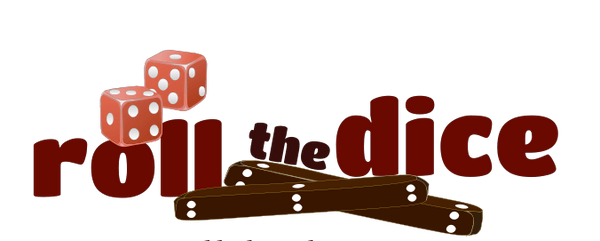ಚೌಸರ್ ನುಡಿಸುವುದು ಹೇಗೆ
ರೋಲ್ ದಿ ಡೈಸ್ ನಿಂದ ಚೌಸರ್ ಗೇಮ್ ಸೆಟ್ ಖರೀದಿಸಿ
ಚೌಸರ್ ಬೋರ್ಡ್ ಆಟದ ಕೈಪಿಡಿ
ಪರಿಚಯ
ಚೌಸರ್ ಒಂದು ಸಾಂಪ್ರದಾಯಿಕ ಭಾರತೀಯ ಬೋರ್ಡ್ ಆಟವಾಗಿದ್ದು, ಇದನ್ನು 2 ರಿಂದ 4 ಆಟಗಾರರು ಆಡಬಹುದು. ಈ ಕೈಪಿಡಿಯು ನಿಮಗೆ ನಿಯಮಗಳು ಮತ್ತು ಆಟದ ಮೂಲಕ ಮಾರ್ಗದರ್ಶನ ನೀಡುತ್ತದೆ.
ಘಟಕಗಳು

- ಬೋರ್ಡ್ : ಚೌಸರ್ ಚಾಪೆ ನಾಲ್ಕು ತೋಳುಗಳನ್ನು ಮತ್ತು "ಮನೆ" ಎಂದು ಕರೆಯಲ್ಪಡುವ ಮಧ್ಯ ಚೌಕವನ್ನು ಹೊಂದಿದೆ.
- ಪ್ಯಾದೆಗಳು : ಹಳದಿ, ಹಸಿರು, ಕೆಂಪು ಮತ್ತು ಕಪ್ಪು ಬಣ್ಣದ ತಲಾ 4.
- ಕೌರಿ ಚಿಪ್ಪುಗಳು : ದಾಳಗಳಾಗಿ ಬಳಸುವ 6 ಕೌರಿ ಚಿಪ್ಪುಗಳು.
ಸೆಟಪ್
- ತಂಡಗಳು : ಹಳದಿ ಮತ್ತು ಹಸಿರು ಒಂದು ತಂಡವನ್ನು ರೂಪಿಸಿದರೆ, ಕೆಂಪು ಮತ್ತು ಕಪ್ಪು ಇನ್ನೊಂದು ತಂಡವನ್ನು ರೂಪಿಸುತ್ತವೆ.
- ಆರಂಭಿಕ ಸ್ಥಾನ : ನಿಮ್ಮ ಹೋಮ್ ಸ್ಟ್ರೆಚ್ನಲ್ಲಿ 4 ನೇ ಬ್ಲಾಕ್ನಲ್ಲಿ ಎರಡು ಪ್ಯಾದೆಗಳನ್ನು ಮತ್ತು ನಿಮ್ಮ ತೋಳಿನ ಬಲಭಾಗದಲ್ಲಿರುವ ಮೇಲಿನಿಂದ 5 ನೇ ಬ್ಲಾಕ್ನಲ್ಲಿ ಎರಡು ಪ್ಯಾದೆಗಳನ್ನು ಇರಿಸಿ.

ಹೇಗೆ ಆಡುವುದು
ಕೌರಿ ಚಿಪ್ಪುಗಳನ್ನು ಉರುಳಿಸುವುದು
- ಕೌರಿ ಶೆಲ್ನ ಪ್ರತಿಯೊಂದು ತೆರೆದ ಬಾಯಿ 1 ಬಿಂದುವನ್ನು ಸೂಚಿಸುತ್ತದೆ.
- ಕೌರಿ ಶೆಲ್ನ ಹಿಂಭಾಗವು 0 ಬಿಂದುಗಳನ್ನು ಸೂಚಿಸುತ್ತದೆ.
- ಎಲ್ಲಾ 6 ಹಸುಗಳು ತಮ್ಮ ಬೆನ್ನನ್ನು ಮಾತ್ರ ತೋರಿಸುತ್ತಾ ತೆರೆದ ಬಾಯಿಯ ಮೇಲೆ ಬಿದ್ದರೆ, ಅದು ಪೂರ್ಣ 12 ಅಂಕಗಳು.
- ಸಂಭಾವ್ಯ ಅಂಕಗಳು: 1, 2, 3, 4, 5, 6, 12.

ಪ್ಯಾದೆಗಳನ್ನು ಸ್ಥಳಾಂತರಿಸುವುದು
- ಪ್ಯಾದೆಗಳು ಅಂಚಿನ ಲೇನ್ಗಳಲ್ಲಿ ಅಪ್ರದಕ್ಷಿಣಾಕಾರವಾಗಿ ಚಲಿಸುತ್ತವೆ.
- ಪ್ಯಾದೆಗಳು ಇತರ ಆಟಗಾರರ ಮಧ್ಯ-ಲೇನ್ ಅಥವಾ ಹೋಮ್ ಸ್ಟ್ರೆಚ್ ಅನ್ನು ಪ್ರವೇಶಿಸುವುದಿಲ್ಲ.
- ನಿಮ್ಮ ಸ್ವಂತ ಮನೆಯ ವಿಸ್ತಾರವನ್ನು ಹೊರತುಪಡಿಸಿ ಬೇರೆ ಸುರಕ್ಷಿತ ಸ್ಥಳಗಳಿಲ್ಲ.
ವಿಶೇಷ ಚಲನೆಗಳು
- ಜೂಡಾ: ವಿಶೇಷ ಸಾಮರ್ಥ್ಯಗಳನ್ನು ನೀಡುವ "ಜೂಡಾ" ಜೋಡಿಯನ್ನು ರೂಪಿಸಲು 17 ನೇ ಬ್ಲಾಕ್ ಅನ್ನು ತಲುಪಿ.
- ನೀವು ಡಬಲ್ಟ್ (6 ಅಥವಾ 12) ಎಸೆದರೆ ಉರುಳಲು ಇನ್ನೊಂದು ಅವಕಾಶ ಪಡೆಯಿರಿ.
- ಸಮ ಸಂಖ್ಯೆಗಳಲ್ಲಿ ಮಾತ್ರ ಚಲಿಸಬಹುದು.

ಎದುರಾಳಿಯ ಪ್ಯಾದೆಗಳನ್ನು ತೆಗೆಯುವುದು
- ನೀವು ಎದುರಾಳಿಯ ಪ್ಯಾದೆಯೊಂದಿಗೆ ಬ್ಲಾಕ್ ಮೇಲೆ ಇಳಿದರೆ, ಎದುರಾಳಿಯ ಪ್ಯಾದೆಯು ಹೋಮ್ ಸ್ಕ್ವೇರ್ಗೆ ಹಿಂತಿರುಗುತ್ತದೆ.
- ಒಂಟಿ ಪ್ಯಾದೆಗಳು "ಜೂಡಾ" ಜೋಡಿಗಳನ್ನು ಹೊರತೆಗೆಯಲು ಸಾಧ್ಯವಿಲ್ಲ.

ಗೆಲ್ಲುವುದು
- ವೈಯಕ್ತಿಕ ಆಟ : ಎಲ್ಲಾ ಪ್ಯಾದೆಗಳನ್ನು ಮೊದಲು ಹೋಮ್ ಸ್ಕ್ವೇರ್ಗೆ ತಲುಪಿಸುವ ಆಟಗಾರ ಗೆಲ್ಲುತ್ತಾನೆ.
- ತಂಡದ ಆಟ : ತನ್ನ ಎಲ್ಲಾ ಪ್ಯಾದೆಗಳನ್ನು ಮೊದಲು ಹೋಮ್ ಸ್ಕ್ವೇರ್ಗೆ ತಲುಪಿಸುವ ತಂಡ ಗೆಲ್ಲುತ್ತದೆ.

ತಂಡದ ಆಟದ ನಿಯಮಗಳು
- ತಂಡದ ಸದಸ್ಯರು ಪರಸ್ಪರರ ಪ್ಯಾದೆಗಳನ್ನು ಹೊರತೆಗೆಯಲು ಸಾಧ್ಯವಿಲ್ಲ.
- ಒಬ್ಬ ತಂಡದ ಸದಸ್ಯರ ಎಲ್ಲಾ 4 ಪ್ಯಾದೆಗಳು ಮನೆಗೆ ತಲುಪಿದರೆ, ಅವರು 4 ತಿರುವುಗಳನ್ನು ಬಿಟ್ಟು ತಮ್ಮ ತಂಡದ ಆಟಗಾರನ ಪರವಾಗಿ ಆಡಬಹುದು.
ರೋಲ್ ದಿ ಡೈಸ್ ನಿಂದ ಚೌಸರ್ ಗೇಮ್ ಸೆಟ್ ಖರೀದಿಸಿ
ವಿವರವಾದ ಟ್ಯುಟೋರಿಯಲ್
ರೋಲ್ ದಿ ಡೈಸ್ - ಚೌಸರ್ ಮ್ಯಾಟ್ ನಾಲ್ಕು ತೋಳುಗಳನ್ನು ಮತ್ತು ಮಧ್ಯದಲ್ಲಿ ಒಂದು ಚದರ ಜಾಗವನ್ನು ಹೊಂದಿದ್ದು ಅದನ್ನು "ಹೋಮ್" ಎಂದು ಕರೆಯಲಾಗುತ್ತದೆ. "ಹೋಮ್" ನಿಂದ ತೋಳಿನ ಅಂತ್ಯದವರೆಗಿನ ಮಾರ್ಗ (ಪ್ರತಿ ತೋಳಿನ ಮಧ್ಯದಲ್ಲಿ) ಆಟಗಾರನ ಹೋಮ್ ಸ್ಟ್ರೆಚ್ ಆಗಿದೆ. ಎರಡರಿಂದ ನಾಲ್ಕು ಆಟಗಾರರು ಆಟವನ್ನು ಆಡಬಹುದಾದರೂ, ಸಾಮಾನ್ಯವಾಗಿ ಎಲ್ಲಾ ನಾಲ್ವರು ಆಟಗಾರರು ಆಡಬೇಕೆಂದು ಶಿಫಾರಸು ಮಾಡಲಾಗುತ್ತದೆ, ಇದರಿಂದ ರೋಮಾಂಚಕಾರಿ ಪಂದ್ಯಕ್ಕಾಗಿ ಇಬ್ಬರ ತಂಡಗಳನ್ನು ರಚಿಸಬಹುದು.
ಆಟಕ್ಕೆ ಹಳದಿ, ಹಸಿರು, ಕೆಂಪು, ಕಪ್ಪು ಬಣ್ಣದ 4 ಪ್ಯಾದೆಗಳು ಇರುತ್ತವೆ. ಸಾಮಾನ್ಯವಾಗಿ ಹಳದಿ ಮತ್ತು ಹಸಿರು ಒಂದು ತಂಡವನ್ನು ರೂಪಿಸುತ್ತವೆ, ಆದರೆ ಕೆಂಪು ಮತ್ತು ಕಪ್ಪು ಇನ್ನೊಂದನ್ನು ರೂಪಿಸುತ್ತವೆ. ಆಟವನ್ನು ಆಡಲು ಆರು ಕೌರಿ ಚಿಪ್ಪುಗಳನ್ನು ಬಳಸಲಾಗುತ್ತದೆ. ಪ್ರತಿಯೊಬ್ಬ ಆಟಗಾರನು ಕೌರಿಗಳನ್ನು ಉರುಳಿಸಲು ಮತ್ತು ತಮ್ಮ ಚಲನೆಗಳನ್ನು ಮಾಡಲು ಸರದಿ ತೆಗೆದುಕೊಳ್ಳುತ್ತಾನೆ. ಕೌರಿ ಚಿಪ್ಪಿನ ಪ್ರತಿಯೊಂದು ತೆರೆದ ಬಾಯಿ 1 ಅನ್ನು ಸೂಚಿಸುತ್ತದೆ. ಕೌರಿ ಚಿಪ್ಪಿನ ಹಿಂಭಾಗವು 0 ಅನ್ನು ಸೂಚಿಸುತ್ತದೆ. ಆದಾಗ್ಯೂ, ಎಲ್ಲಾ 6 ಕೌರಿಗಳು ತಮ್ಮ ಬೆನ್ನನ್ನು ಮಾತ್ರ ತೋರಿಸುವ ತೆರೆದ ಬಾಯಿಯ ಮೇಲೆ ಬಿದ್ದರೆ, ಅದು ಪೂರ್ಣ 12 ಅಂಕಗಳು. ಆದ್ದರಿಂದ ಅಂಕಗಳು 1, 2, 3, 4, 5, 6, 12 ಆಗಿರಬಹುದು.
ಆರಂಭದಲ್ಲಿ, ಎರಡು ಪ್ಯಾದೆಗಳನ್ನು ಹೋಮ್ ಸ್ಟ್ರೆಚ್ನಲ್ಲಿ 4 ನೇ ಬ್ಲಾಕ್ನಲ್ಲಿ ಇರಿಸಲಾಗುತ್ತದೆ, ಎರಡನ್ನು ಮೇಲಿನಿಂದ 5 ನೇ ಬ್ಲಾಕ್ನಲ್ಲಿ (ಆಟಗಾರನ) ತೋಳಿನ ಬಲಭಾಗದಲ್ಲಿ ಇರಿಸಲಾಗುತ್ತದೆ. ಪ್ಯಾದೆಗಳನ್ನು ಅಪ್ರದಕ್ಷಿಣಾಕಾರವಾಗಿ ಮತ್ತು ತೋಳುಗಳ ಅಂಚುಗಳಲ್ಲಿ ಚಲಿಸಲಾಗುತ್ತದೆ. ಪ್ಯಾದೆಗಳು ಮಧ್ಯದ ಲೇನ್ಗೆ ಅಥವಾ ಇತರ ಆಟಗಾರರ ಹೋಮ್ ಸ್ಟ್ರೆಚ್ಗೆ ಹೋಗುವುದಿಲ್ಲ, ಆದರೆ ಅಂಚಿನ ಲೇನ್ಗಳಲ್ಲಿ ಉಳಿಯುತ್ತವೆ. ಚೌಸರ್ನಲ್ಲಿ, ಮುಖ್ಯ ಮಾರ್ಗಗಳಲ್ಲಿ ಯಾವುದೇ ಸುರಕ್ಷಿತ ಸ್ಥಳಗಳಿಲ್ಲ. ಸುರಕ್ಷಿತ ಸ್ಥಳಗಳು ಆಯಾ ಆಟಗಾರರ ಹೋಮ್ ಸ್ಟ್ರೆಚ್ಗಳು ಮಾತ್ರ.
ಚೌಸರ್ ಆಟದ ನಿಯಮಗಳು
ಆಯ್ಕೆ ಮಾಡಿದ ಆಟಗಾರನು ಕೌರಿ ಚಿಪ್ಪುಗಳನ್ನು ಉರುಳಿಸುತ್ತಾನೆ. ಅವನು ಉರುಳಿಸಿದ ಸ್ಕೋರ್ಗೆ ಅನುಗುಣವಾಗಿ ಯಾವುದೇ ಪ್ಯಾದೆಯನ್ನು ಅದರ ಹಾದಿಯಲ್ಲಿ ಚಲಿಸಬಹುದು. ಅವನ ಮೊದಲ ಗುರಿ 17 ನೇ ಬ್ಲಾಕ್ಗೆ ಅಥವಾ ಬಲಭಾಗದ ತೋಳಿನ ಮೊದಲ ಬ್ಲಾಕ್ಗೆ ಒಂದು ಜೋಡಿ ಪ್ಯಾದೆಗಳನ್ನು ಸರಿಸುವುದು, ಹೀಗಾಗಿ ಅದು "ಜೂಡಾ" ಆಗುತ್ತದೆ.
ಹೀಗೆ ಚಲಿಸುವುದರಿಂದ ಅವನಿಗೆ ಕೆಳಗೆ ಪಟ್ಟಿ ಮಾಡಲಾದ ಸೂಪರ್ ಪವರ್ಗಳು ದೊರೆಯುತ್ತವೆ.
- ಅವನು ಡಬಲ್ಟ್ ಎಸೆದರೆ, ಅವನಿಗೆ ದಾಳ ಎಸೆಯಲು ಇನ್ನೊಂದು ಅವಕಾಶ ಸಿಗುತ್ತದೆ.
- ಅವನು ಹಾದಿಯಲ್ಲಿ ಎಲ್ಲಿಯಾದರೂ "ಜೂಡಾ" ಜೋಡಿಯನ್ನು ರಚಿಸಬಹುದು.
ಅಲ್ಲದೆ, "ಜೂಡಾ" ಜೋಡಿ 17 ನೇ ಬ್ಲಾಕ್ಗಿಂತ ಮುಂದೆ ಚಲಿಸಲು, (ಅದೇ ಆಟಗಾರನ) ಒಬ್ಬ ಪ್ಯಾದೆಯು ಈ ಮೊದಲ "ಜೂಡಾ" ಪ್ಯಾದೆಗಳನ್ನು ದಾಟಬೇಕು.
ಆಟಗಾರನು 6 ಅಥವಾ 12 ಅಂಕಗಳನ್ನು ಪಡೆದರೆ, ಅದನ್ನು ಡಬಲ್ಟ್ ಎಂದು ಕರೆಯಲಾಗುತ್ತದೆ ಮತ್ತು ಆಟಗಾರನಿಗೆ ಕೌರಿಗಳಲ್ಲಿ ಹೇಳಿದಂತೆ ಮತ್ತೊಂದು ಅವಕಾಶ ಸಿಗುತ್ತದೆ. "ಜೂಡಾ" ಜೋಡಿಗಳು ಸಮ ಸಂಖ್ಯೆಗಳ ಮೇಲೆ ಮಾತ್ರ ಚಲಿಸಬಹುದು. ಅವರು ಪ್ರತ್ಯೇಕವಾಗಿ ಚಲಿಸಲು ಆರಿಸಿಕೊಂಡರೆ, ಅವರು "ಜೂಡಾ" ಅಥವಾ ಜೋಡಿಯಾಗಿರುವುದನ್ನು ನಿಲ್ಲಿಸುತ್ತಾರೆ.
ಎದುರಾಳಿಯ ಪ್ಯಾದೆಗಳನ್ನು ಹೊರತೆಗೆಯುವುದು
ಆಟದ ಸಮಯದಲ್ಲಿ, ಆಟಗಾರನು ತನ್ನ ಎದುರಾಳಿಯ ಪ್ಯಾದೆಗಳನ್ನು ಹೊಂದಿರುವ ಅದೇ ಬ್ಲಾಕ್ನಲ್ಲಿ ತನ್ನ ಪ್ಯಾದೆಯನ್ನು ಇರಿಸಲು ಅವಕಾಶ ನೀಡುವ ಸ್ಕೋರ್ ಅನ್ನು ಉರುಳಿಸಿದರೆ, ಮತ್ತು ಅವನು ತನ್ನ ಪ್ಯಾದೆಯನ್ನು ಅಲ್ಲಿ ಇರಿಸಲು ಆ ಆಯ್ಕೆಯನ್ನು ಬಳಸಿದರೆ. ನಂತರ ಎದುರಾಳಿಯ ಪ್ಯಾದೆಯು ಮನೆಗೆ ಹಿಂತಿರುಗುತ್ತದೆ (ಕೇಂದ್ರ ಚೌಕದ ಬ್ಲಾಕ್). ಎದುರಾಳಿಯು ತನ್ನ ಮುಂದಿನ ಸರದಿಯಲ್ಲಿ, ಸ್ಕೋರ್ ಏನೇ ಇರಲಿ, ಈ ಪ್ಯಾದೆಯನ್ನು ಸ್ವತಃ ಇಡಬೇಕು.
ಒಂಟಿ ಪ್ಯಾದೆಗಳು "ಜೂಡಾ" ಜೋಡಿಯನ್ನು ಹೊರತೆಗೆಯಲು ಸಾಧ್ಯವಿಲ್ಲ. ಇತರ "ಜೂಡಾ" ಜೋಡಿಗಳು ಮಾತ್ರ ಅವುಗಳನ್ನು ಹೊರತೆಗೆಯಬಹುದು. ಒಮ್ಮೆ ಹೊರತೆಗೆದ ನಂತರ, ಎರಡೂ ಪ್ಯಾದೆಗಳು ಮನೆಗೆ ಹಿಂತಿರುಗುತ್ತವೆ (ಮಧ್ಯ ಚೌಕದ ಬ್ಲಾಕ್).
ಇತರ ಹಲವು ಆಟಗಳಿಗಿಂತ ಭಿನ್ನವಾಗಿ, ಎದುರಾಳಿಯ ಪ್ಯಾದೆಗಳನ್ನು ಹೊರತೆಗೆಯಲು ಯಾವುದೇ ಹೆಚ್ಚುವರಿ ತಿರುವು ಇರುವುದಿಲ್ಲ.
ಸಂಪೂರ್ಣ ಸುತ್ತನ್ನು ಪೂರ್ಣಗೊಳಿಸಿದ ನಂತರ ಹೋಮ್ ಸ್ಟ್ರೆಚ್ಗೆ ಪ್ರವೇಶಿಸುವ ಎಲ್ಲಾ ಪ್ಯಾದೆಗಳನ್ನು ಅಡ್ಡಲಾಗಿ ಇರಿಸಲಾಗುತ್ತದೆ ಇದರಿಂದ ಅದು ಆ ಸಮಯದಲ್ಲಿ ಪ್ರಾರಂಭವಾಗುವ ಪ್ಯಾದೆಗಳಿಂದ ಪ್ರತ್ಯೇಕಿಸಲ್ಪಡುತ್ತದೆ.
ಗೆಲುವು (ವೈಯಕ್ತಿಕವಾಗಿ ಆಡುವುದು)
ಕೇಂದ್ರ ಹೋಮ್ ಸ್ಕ್ವೇರ್ನಲ್ಲಿ ತನ್ನ ಎಲ್ಲಾ ಪ್ಯಾದೆಗಳನ್ನು ಇರಿಸುವ ಮೊದಲ ಆಟಗಾರ ವಿಜೇತ.
ತಂಡವಾಗಿ ಆಡುವುದು.
ತಂಡವಾಗಿ ಆಡುವ ನಿಯಮಗಳು ವ್ಯಕ್ತಿಗಳಿಗೆ ಇರುವಂತೆಯೇ ಇರುತ್ತವೆ, ಈ ಕೆಳಗಿನ ಹಂತಗಳನ್ನು ಹೊರತುಪಡಿಸಿ:
- ತಂಡದ ಸದಸ್ಯರು ಇತರ ತಂಡದ ಸದಸ್ಯರ ಪ್ಯಾದೆಗಳನ್ನು ಹೊರತೆಗೆಯಲು ಸಾಧ್ಯವಿಲ್ಲ.
- ತಂಡದ ಸದಸ್ಯರ ಎಲ್ಲಾ 4 ಪ್ಯಾದೆಗಳು ಮನೆಗೆ ತಲುಪಿದ್ದರೆ, ತಂಡದ ಸದಸ್ಯರು 4 ತಿರುವುಗಳನ್ನು ಬಿಟ್ಟು 5 ನೇ ಸರದಿಯಿಂದಲೂ ತಮ್ಮ ತಂಡದ ಸಹ ಆಟಗಾರನ ಪರವಾಗಿ ಆಡಬಹುದು. ಅವರು ಉರುಳಿಸುವ ಯಾವುದೇ ಸಂಖ್ಯೆಯನ್ನು ತಂಡದ ಸಹ ಆಟಗಾರನ ಪ್ಯಾದೆಗಳಿಗೆ ಅನ್ವಯಿಸಬಹುದು.
ಗೆಲುವು (ತಂಡವಾಗಿ ಆಡುವುದು)
ಕೇಂದ್ರ ಹೋಮ್ ಸ್ಕ್ವೇರ್ನಲ್ಲಿ ತಮ್ಮ ಎಲ್ಲಾ ಪ್ಯಾದೆಗಳನ್ನು ಮೊದಲು ಇರಿಸುವ ತಂಡವು ವಿಜೇತರಾಗುತ್ತದೆ.
